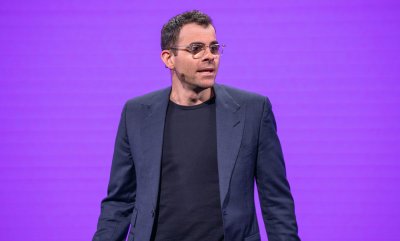GPT-5: Hype vs. Reality – Did OpenAI's Latest Model Fall Short?
@devadigax15 Aug 2025

Last week, the air crackled with anticipation. OpenAI, the powerhouse behind ChatGPT, was poised to unleash GPT-5, a model touted as a revolutionary leap forward in artificial intelligence. CEO Sam Altman himself fueled the flames, comparing the impending release to the introduction of the iPhone's Retina display – a transformative moment in technological history. The reality, however, proved more nuanced, raising questions about the sustainability of the ever-increasing hype surrounding AI advancements.
The pre-launch fanfare painted a picture of a near-perfect AI, capable of feats previously relegated to science fiction. Altman's emphatic statement, declaring a point of no return, implied a paradigm shift in AI capabilities, suggesting GPT-5 would leave previous iterations in the dust. This carefully crafted narrative generated immense excitement within the tech community and beyond, leading to a frenzy of speculation and expectation.
However, the launch itself lacked the seismic impact many had predicted. While GPT-5 undoubtedly showcased improvements over its predecessors, the advancements weren't the paradigm-shifting revolution some had anticipated. Instead, users and critics alike noted incremental improvements in areas like reasoning, context understanding, and creative writing. The model exhibited enhanced fluency and reduced instances of “hallucinations” – instances where the AI fabricates information – but these were largely refinements rather than radical breakthroughs.
The discrepancy between the pre-launch hype and the actual capabilities of GPT-5 underscores a growing concern within the AI industry: the potential for overpromising and the subsequent disappointment that can erode public trust. While incremental progress is essential for the continued development of AI, the tendency to market each new iteration as a game-changer creates an unsustainable cycle of inflated expectations.
This isn’t to say that GPT-5 is a failure. Far from it. The model represents a significant step forward in large language model (LLM) technology. Its improved performance in various tasks is undeniable. However, the expectation that GPT-5 would represent a singularity moment in AI development, a sudden and dramatic shift in capabilities, proved unfounded.
The reality is that AI development, while incredibly rapid, is still an iterative process. Significant breakthroughs are often the culmination of many smaller, incremental improvements. The focus should be on the steady, cumulative progress being made, rather than on sensationalizing each new release.
The aftermath of the GPT-5 launch also highlights the complex relationship between public perception and technological reality. The media, eager to report on groundbreaking advancements, often contributes to the hype cycle, amplifying pre-launch pronouncements and creating a narrative that can be difficult to reconcile with the actual product. This creates a challenge for AI companies, who must navigate the delicate balance between generating excitement and managing expectations.
Looking ahead, the AI industry needs to adopt a more responsible approach to communication. While generating excitement is crucial for attracting investment and talent, a more realistic portrayal of advancements is vital for building trust and fostering a sustainable approach to innovation. OpenAI, along with other leading AI companies, has a responsibility to ensure that the narratives surrounding their products align with the actual capabilities, avoiding the pitfalls of overselling future potential.
The GPT-5 launch serves as a valuable lesson. It is a reminder that revolutionary advancements rarely emerge overnight, and that the steady accumulation of progress is just as important, if not more so, than dramatic, singular breakthroughs. While the hype around GPT-5 ultimately proved excessive, the underlying technology continues to evolve, steadily pushing the boundaries of what's possible in artificial intelligence. The true measure of success lies not in the initial splash, but in the long-term impact and continued development of the technology itself. The next chapter in this story will be written not by the headlines, but by the ongoing refinement and application of this powerful technology.
The pre-launch fanfare painted a picture of a near-perfect AI, capable of feats previously relegated to science fiction. Altman's emphatic statement, declaring a point of no return, implied a paradigm shift in AI capabilities, suggesting GPT-5 would leave previous iterations in the dust. This carefully crafted narrative generated immense excitement within the tech community and beyond, leading to a frenzy of speculation and expectation.
However, the launch itself lacked the seismic impact many had predicted. While GPT-5 undoubtedly showcased improvements over its predecessors, the advancements weren't the paradigm-shifting revolution some had anticipated. Instead, users and critics alike noted incremental improvements in areas like reasoning, context understanding, and creative writing. The model exhibited enhanced fluency and reduced instances of “hallucinations” – instances where the AI fabricates information – but these were largely refinements rather than radical breakthroughs.
The discrepancy between the pre-launch hype and the actual capabilities of GPT-5 underscores a growing concern within the AI industry: the potential for overpromising and the subsequent disappointment that can erode public trust. While incremental progress is essential for the continued development of AI, the tendency to market each new iteration as a game-changer creates an unsustainable cycle of inflated expectations.
This isn’t to say that GPT-5 is a failure. Far from it. The model represents a significant step forward in large language model (LLM) technology. Its improved performance in various tasks is undeniable. However, the expectation that GPT-5 would represent a singularity moment in AI development, a sudden and dramatic shift in capabilities, proved unfounded.
The reality is that AI development, while incredibly rapid, is still an iterative process. Significant breakthroughs are often the culmination of many smaller, incremental improvements. The focus should be on the steady, cumulative progress being made, rather than on sensationalizing each new release.
The aftermath of the GPT-5 launch also highlights the complex relationship between public perception and technological reality. The media, eager to report on groundbreaking advancements, often contributes to the hype cycle, amplifying pre-launch pronouncements and creating a narrative that can be difficult to reconcile with the actual product. This creates a challenge for AI companies, who must navigate the delicate balance between generating excitement and managing expectations.
Looking ahead, the AI industry needs to adopt a more responsible approach to communication. While generating excitement is crucial for attracting investment and talent, a more realistic portrayal of advancements is vital for building trust and fostering a sustainable approach to innovation. OpenAI, along with other leading AI companies, has a responsibility to ensure that the narratives surrounding their products align with the actual capabilities, avoiding the pitfalls of overselling future potential.
The GPT-5 launch serves as a valuable lesson. It is a reminder that revolutionary advancements rarely emerge overnight, and that the steady accumulation of progress is just as important, if not more so, than dramatic, singular breakthroughs. While the hype around GPT-5 ultimately proved excessive, the underlying technology continues to evolve, steadily pushing the boundaries of what's possible in artificial intelligence. The true measure of success lies not in the initial splash, but in the long-term impact and continued development of the technology itself. The next chapter in this story will be written not by the headlines, but by the ongoing refinement and application of this powerful technology.
Comments
Related News

Beyond the Mic: Instagram Denies Eavesdropping, But AI's Predictive Power Redefines Digital Privacy
@devadigax | 01 Oct 2025
@devadigax | 01 Oct 2025

Microsoft 365 Premium Redefines AI Productivity, Bundling Copilot to Rival ChatGPT Plus Pricing
@devadigax | 01 Oct 2025
@devadigax | 01 Oct 2025

Wikimedia's Grand Vision: Unlocking Its Vast Data Universe for Smarter Discovery by Humans and AI
@devadigax | 30 Sep 2025
@devadigax | 30 Sep 2025

Google Drive Fortifies Defenses with New AI-Powered Ransomware Detection
@devadigax | 29 Sep 2025
@devadigax | 29 Sep 2025

The DeepSeek Phenomenon: Unpacking the Viral AI Chatbot from a Leading Chinese Lab
@devadigax | 29 Sep 2025
@devadigax | 29 Sep 2025
 AI Tool Buzz
AI Tool Buzz